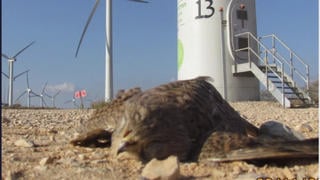
Was the Black lawn jockey statue used as a signal to guide escaping slaves on the Underground Railroad? No, there is no primary evidence to support this claim, according to the Jim Crow Museum of Racist Memorabilia and a professor emeritus at Ohio State University's Department of African American and African Studies.
The claim originally appeared as a Facebook post (archived here) on August 14, 2020, and went viral again in February 2022. It opens:
TODAY'S HISTORY LESSON: THE BLACK LAWN JOCKEY (footman).
These days people don't know the real meaning behind these statues, so they vandalize them, and think of them as racist, etc.
This is what the post looked like on Facebook at the time of writing:
(Source: Facebook screenshot taken on Fri Mar 11 20:30:29 2022 UTC)
Scholars have not provided independent source material to substantiate the claim that Black lawn jockeys are not a symbol of racism and that their history was actually as a beacon of help for people fleeing slavery via the Underground Railroad in the Civil War.
The Jim Crow Museum of Racist Memorabilia at Ferris State University in Big Rapids, Michigan addressed the topic in a 2020 post on their website titled, "Lawn Jockey Legends." It responded to a questioner who wrote about a social media post saying the lawn jockeys "were actually used on the Underground Railroad and should be viewed from that lens":
A: Thanks for the question. We get this question quite often in the museum when people explore our 'Racism in the Lawn' section. I refer you to something that [founder and curator] Dr. [David] Pilgrim has argued. 'When it comes to questions about something that may or may not have happened during enslavement in the United States, it likely did occur; however, that does not mean it was a common occurrence.' Keep in mind that enslavement lasted for two centuries. During that long period, it is possible that someone used the lawn jockey in the way you described; however, there is no evidence that this practice was commonplace.
The museum gave several examples of where this claim came from, citing the theory posited in the mid-1970s by Charles L. Blockson, an African American historian:
Blockson and a few others began teaching this narrative as a part of African American history. In some ways, this was a way to reframe or reclaim a racist object but mostly, it was taught as an actual occurrence. However, there is very little, if any, primary source material for the claim that lawn jockeys were used as signaling devices for escaping slaves on the Underground Railroad.
Blockson spoke to the Chicago Tribune about his theory in a 1998 article titled, "THE SECRET LIFE OF THE BLACK LAWN JOCKEY":
'These statues were used as markers on the Underground Railroad throughout the South into Canada,' says historian/author Charles Blockson, curator of the Afro-American Collection at Temple University in Philadelphia. 'Green ribbons were tied to the arms of the statue to indicate safety; red ribbons meant to keep going.
'People who don't know the history of the jockey have feelings of humiliation and anger when they see the statue,' he adds. 'But this figure, which was sometimes used in a clandestine nature, and sometimes without the knowledge of the person who owned the statue, was a positive and supportive image to African-Americans on the road to freedom.'
Notably, the article does not provide documentary or other contemporaneous evidence for the lawn-jockey-as-waysign idea.
Another legend the museum refutes is that the lawn jockey is based on Jocko Graves, a young African American boy who served Gen. George Washington during the Revolutionary War.
George Washington's Mount Vernon Library addressed the claim on the website:
To date, despite the best efforts of Mount Vernon's staff and the people at Washington's Crossing Historic Park, no documentation to verify the story about Jocko Graves has been found.
Kenneth W. Goings, professor emeritus in the Department of African American and African Studies at Ohio State University, dismissed the assertion that the statues were not racist and were beacons of help, noting that if escaping slaves were using them as a guidance then bounty hunters hired to catch them would have known about the beacons as well.
He was asked about the lawn jockeys being used "as a silent signaling system for the Underground Railroad" at 23:45 in the video posted on YouTube from an October 2021 panel titled, "Mythbusting Lawn Jockeys: Untangling History from Lore," at the National Sporting Library & Museum.
Goings says the notion is even "weaker" than the claims that they represented Jocko Graves. He notes that in the 1850s the Second Fugitive Slave Act allowed slave owners to hire bounty hunters to track down escaped slaves. Any lawn jockeys used as a signal for slaves escaping via the Underground Railroad would have been discovered by the bounty hunters.
He also said he had found no evidence in historical publications of the statues being used this way at 25:39
I've read dozens of biographies and autobiographies from enslaved people who escaped and from the conductors who took them north and never once, never once is a mention of these statues.


















